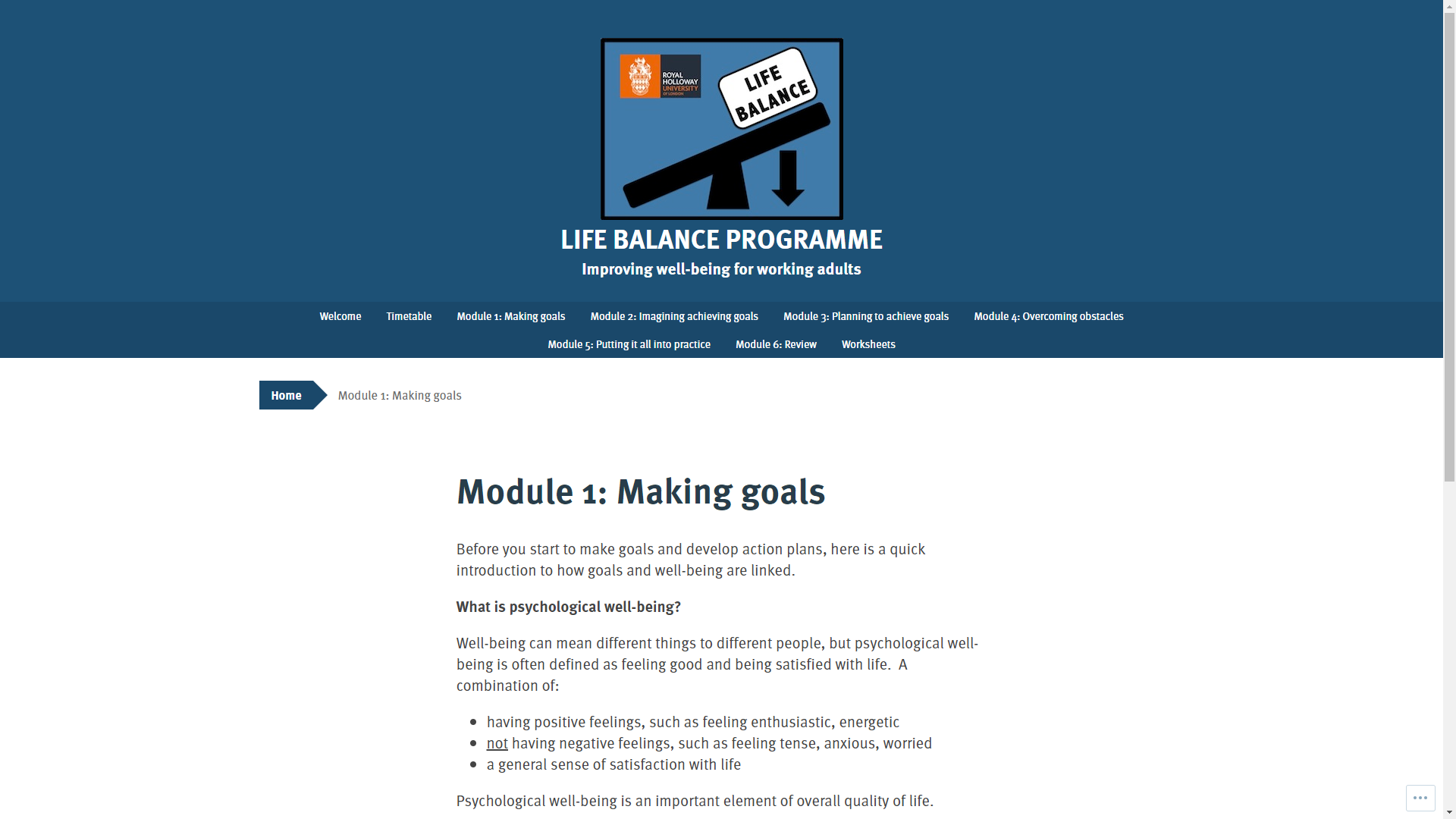Can an online training programme improve staff wellbeing at work?
This week’s guest blog is from Dr. Jeremy Oliver from Royal Holloway University of London on the results from his recently published randomised controlled trial for an online training programme for working adults in setting and pursuing personal life goals.
Workplace stress is increasing. High workloads, rapid delivery targets and lack of job security are damaging the wellbeing of working adults. Employers are looking for initiatives to help improve employee wellbeing that are brief, accessible, and widely available.
The evaluation gap
Only one in five Human Resource practitioners evaluate wellbeing interventions in their organisations, perhaps because wellbeing can be tricky to measure. But evaluating workplace wellbeing interventions doesn’t have to be a massively complex process. It’s possible to carry out an evaluation to a high standard of evidence, without huge costs involved. Our randomised controlled trial was run without external funding. It needed staff time to run (as part of student research time), but the only extra costs were about £200 to host the website. Other methods may be appropriate for different workplaces, but with planning and good contacts in workplaces, the costs can be kept low.
The key is to start trialling different ways of measuring impact, and sharing the learning, so the gap in our collective knowledge about which approaches work to improve wellbeing in different organisations can start to be filled.
The research
The randomised controlled trial that me and Professor Andrew MacLeod ran involved 330 employees across the UK. Participants reported improved wellbeing – greater life satisfaction, more positive emotions, less negative emotions, and a greater sense of purpose – five weeks after starting the programme and then three months later.

How did the programme have an impact?
The programme helped employees:
- to identify goals linked to their personal values
- develop steps to move towards selected goals
- anticipate and deal with obstacles
- maintain motivation.
The programme had several key design features:
- Clinical expertise brought into the workplace – the training programme was adapted from a successful goal and action planning treatment programme used in mental health service and community settings.
- Easily accessible – an online resource that could be accessed at home or work.
- Designed to fit around work and life commitments – the training was designed to be accessed in short bites, to fit around high workloads and other life commitments.
Improved self-reported wellbeing
A working adult who took part in the study said “I found the programme really easy to use and fit in around other commitments. It really helped me to focus on goals for myself after returning to work following maternity leave. The step by step process helped to maintain my momentum and contributed to a greater sense of achievement for me. I will definitely be returning to the programme materials at regular intervals when I need to refresh my life goals.”
Reflecting on the results
I work with families in front-line NHS services in a busy clinic near the City of London. Every day, I see parents who are stressed and overwhelmed, juggling their work and family life. It was great to be able to trial a successful wellbeing programme to help working adults focus their time and efforts on what is most important to them, to improve their wellbeing and engagement with life.
